Guide to Smart Gun Safety Technologies: Legislation, Innovation & More


One of the hottest political and social topics shaping American culture today is none other than gun safety, particularly it’s adjoining refuge or threat (depending on which side you are on), gun control. Obviously, the debate wasn’t created in a vacuum, the often-vitriolic discussion has emerged in response to the frequent acts of violence and terror, made possible by the wide legal — and illegal — availability of firearms in the United States.
Though statistics on acts of violence committed by individuals who illegally possess firearms remains sketchy (federal data hasn’t been compiled on the topic since 2004), we do know that the United States, along with Guatemala, Venezuela, Colombia, Mexico, and Brazil, make for more than half of gun-related deaths worldwide. Of that statistic, the United States accounts for 14.8% of the world’s gun deaths, the most heavily-reported being school shootings and other acts of terrorism on civilians. Tack that onto the roughly 500 accidental shooting deaths per year, the need for action is a critical one.
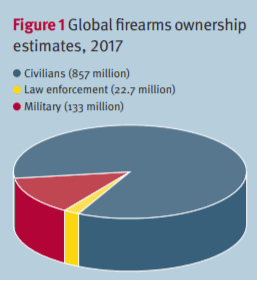
While gun safety and, even more so, gun control, inspires arguments that often don’t bring about solutions, there is a group of forward-thinking firms that, through the use of innovative technology, are presenting both sides with a useful middle ground. This resolution is coming to life in what are known as smart guns or smart gun securities, including tech-equipped weapons and/or weapons accessories that help guarantee that firearms can only be used by their rightful, legal owners.
Still, there’s a heated debate about the usefulness and safety of such technologies. On one side of the argument are those who believe these innovations could both safe lives and reinvigorate an industry that has been so mired by political unknowns and negative press. On the other, opponents point out flaws in technologies and argue that addressing the availability of firearms should be prioritized over introducing new technologies. In this guide, we’ll examine smart guns and smart gun security technologies, their potential benefits, the progression of tracking technologies and tracking initiatives, and current regulations.
In this guide, we’ll discuss:

Screenshot via Yardarm Technologies
According to smart guns legal advocate Giffords Law Center to Prevent Gun Violence, smart guns are “personalized firearms [that] offer essential, lifesaving protections against the unauthorized use of firearms.” For the sake of inclusivity, smart gun technology, in addition to physical firearms, also include devices like locks and safes that employ high-tech, gun tracking methods with RFID and barcoding elements. This technology is put into place to keep weapons away from those who haven’t been authorized to use them.
The way smart guns and smart gun security technology works, in a nutshell, is by providing three commands, via The Engineering Projects:
In order to achieve these three steps, smart gun designers and manufacturers are making use of wireless RFID readers which are built into the gun or the gun’s accessories. Once the gun is handled, an embedded code signals, searching for a predetermined match via biometrics (like fingerprints), a code, a token, etc. If a match is recognized, the gun’s electromechanical parts are released, thus granting it access to its rightful owner and operator.
As of today, many smart guns are assembled with an RFID chip that communicates with a ‘token’ that the owner wears, such as a ring or bracelet. Typically, the gun will be locked and unable to access unless the token, communicating with the embedded code, is within several inches or feet of it.
You can think of this RFID technology as an invisible ‘lock’ or ‘safety net’ atop of the weapon. For all intents and purposes, if the rightful owner of the weapon is not holding it or within close range of it, the likelihood that it will be fired is greatly diminished.
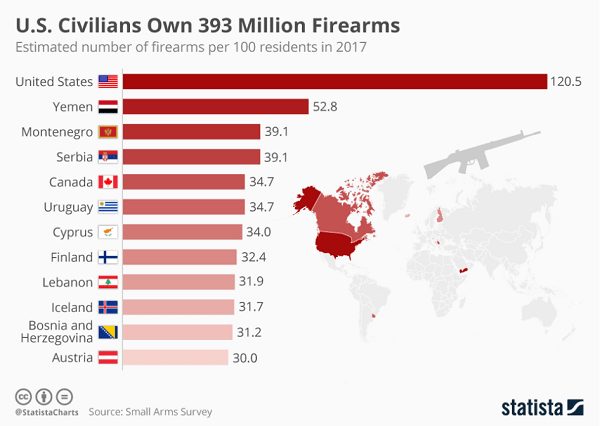
Screenshot via Statista
The benefits of smart guns and smart gun security are numerous, particularly when it comes to the topics of general safety and anti-theft protection. Giffords Law Center lists its key reasons as:
In terms of anti-theft benefits, the sturdiest examples of RFIDs can also employ GPS to track the firearm at all times. Similar to the ‘Find My iPhone’ feature built into iPhones, some smart guns, like GunGuardian’s Hybrid Trigger Shield (HTS), can also do the same.
Taking a more off-beat approach to the issue, some experts think that availability of smart guns might actually rev up the firearm industry as a whole, thus stimulating the entire economy. In 2018, the United States firearm industry saw a 6.1% slump in revenue, what industry insiders refer to as the ‘Trump Slump’ due to President Trump’s pro-firearm agenda and very public backing by the NRA.
Over the past decade, gun sales have experienced powerful highs and lows that are mostly attributed by economists to leadership interests. As we move into 2020, we face a world of political unknowns. If Americans decide to make a change to a candidate whose platform focuses on stauncher firearm regulations, RFID-powered smart guns could be the middle ground that appeases both sides.

Screenshot via Smart Tech Challenges Foundation
Smart gun technology has been on the public’s radar for more than two decades, but, due to a long list of political, financial, and technical factors, its evolution has gone slower than once projected. That’s not to say that there’s not support for it, particularly among gun owners. The Smart Tech Challenges Foundation reports that, in a 2019 national market survey of gun owners, 85% of respondents said they feel the decision to purchase a gun equipped with smart technology should be the consumer’s choice. More than half (54%) of those familiar with smart gun technology said they’d probably or definitely purchase it; that figure rises to 65% among households with children. More than two-thirds of respondents (67%) said that safely securing and storing their firearms is extremely important, while nearly all said it’s at least somewhat important.
Despite the support for smart gun safety technology among gun owners, the Smart Tech Challenges Foundation says that innovation in this area has been stagnant for several decades. It’s safe to say that the smart gun market is still in its ‘Wild West’ phase, in a sense, specifically due to the fact that some of the nation’s largest gun manufacturers have pulled their support from the crusade. Most notably Sturm, Ruger & Co, and American Outdoor Brands (AOBC), the parent company of Smith & Wesson, have ceased to invest in integrating smart guns into their brands. Though their reasons behind the decision haven’t been spoken about at length, many experts feel that the lack of involvement is politically-motivated.
Whatever their reasons for pulling out may be, that hasn’t stopped lesser-known firms from innovating and providing the latest gun safety technologies to the public. Presently, consumers can purchase smart guns that are powered with some (or all) of the following features:
These smart guns are marketed to a range of groups and individuals, including the hobbyist gun owner, all the way up to police departments and military entities. Depending upon the gun’s use and buyer, the features might be customized based upon their specific security needs.
Looking into the future, biometric technology is one of the most anticipated features. Currently, this technology has yet to make a widespread mark on the industry, but it is being made possible and available by several smart gun pioneers, including SGTi, Sentinl, and Biofire.
In addition to biometrics, smart guns, just like any other device equipped with Bluetooth, RFID, and biometric scanning capabilities, will evolve along with the rest of technology. Though access methods and lines may vary, speed, efficiency, privacy, safety, and new features in smart guns will keep up to follow emerging trends.
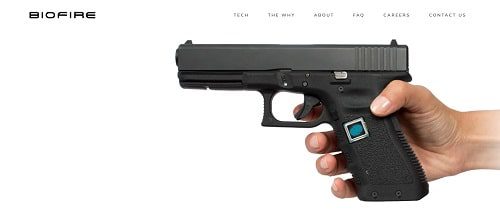
Screenshot via Biofire
As mentioned, most of the major players in the firearms industry dropped their support and investments in the technology in 2016, when then-President Obama made an official smart gun push, introducing them into the gun reform discussion. Right around this time, the prominent Silicon Valley smart gun technology innovators who were, at one time skittish about taking part in the gun industry, experienced a seismic stall. This is often attributed to the aforementioned “smart gun push,” which is reported to have scared the larger gun manufacturers into believing that gun ownership laws would shift solely to require the adoption of smart gun technologies.
Whatever the case may be, through this controversy emerged a small yet mighty group of smart gun innovators. Here are some of the most influential:

As highlighted, RFID, Bluetooth, and a range of biometric technologies have served as the most practical features of the first smart guns. Currently, the scanning capabilities allow for the guns to fulfill their missions of providing safety and security, as well as tracking.
With RFID-powered smart guns, the user is able to control who gets their hands on the firearm by a token system made possible with passive RFID chips. Passive RFID chips, otherwise known as short-range RFID chips, are powered by electromagnetic induction, eliminating the need for batteries.
As with most high-tech equipment, there exists a similar fear about privacy when it comes to smart gun tracking, specifically whether the user might be tracked via its built-in Bluetooth and GPS capabilities. Facing this issue, some have identified the implementation of blockchain technology.
Blockchain could help facilitate background checks using serial numbers by keeping a current roster of the purchase lists. In theory, if someone were to be added or removed to the list, the powers that be would be able to easily track the individuals, as well as their firearms.
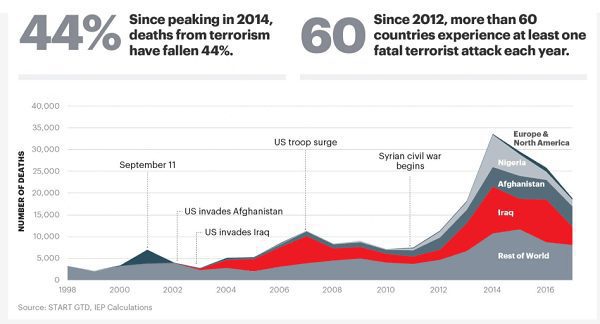
Screenshot via Vision of Humanity
The U.S. Department of Defense (DoD) also faces challenges regarding the safety and accessibility of guns and other weapons, but on a much larger scale. The DoD and other world leaders are fighting a continued battle against terror. With the global terrorism threat expected to remain high over the next decade, preventing terrorists from gaining access to military assets and technologies, including weapons and ammunition, remains a priority. Theft and diversion of these assets remains a challenge due to the complexity of the threat landscape and the various theft and diversion means terrorist groups and individuals employ.
Many nations have laws that govern the control of firearms and ammunition, including trade and export regulations to control the export of goods based on the nature and destination of the materials. One example is the United Kingdom’s Firearms Act 1968. Nations also use sanctions, which block assets held by terrorists. In the United States, the DoD requires UID marking for all military equipment and parts, but other nations have their own traceability requirements.
On a global scale, the Arms Trade Treaty (ATT) is the first international trade treaty that aims to regulate the international trade of conventional arms. The ATT addresses tracking measures, and other current marking standards exist for firearms, ammunition, and other materials, but there is no single, internationally recognized regulatory framework for consistent marking standards.
An international framework, using barcodes, would support effective tracking of weapons, ammunition, and other assets often sought by terrorist groups. A barcode tracking framework enables the use of check-in/check-out procedures, providing a clear, auditable chain of custody to increase accountability. Weapons and other supplies can be traced back to the last known point of possession, allowing for the identification of possible corruption or weak points in the security chain. Barcodes also deter theft and diversion, warning potential perpetrators that the items are traceable. Even if clearly marked and labeled supplies don’t deter a theft, items labeled with barcodes later seized from weapons caches or during arrests or raids can be easily traced back to the point of origin and the last known point of legitimate custody, also allowing authorities to identify weak security points and corruption.
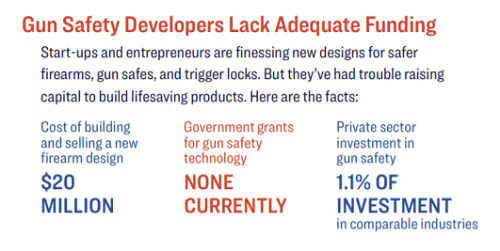
Screenshot via Giffords Law Center
Currently, the Consumer Product Safety Commission (CPSC) excludes firearms and ammunitions. Background checks are required to purchase firearms in the United States, and firearm sales are subject to other regulations, as well. Exports are regulated by the U.S. Department of State (DOS), Directorate of Defense Trade Controls (DDTC). Specifically, “The export of shotguns and buckshot is controlled under the Bureau of Industry and Security’s (BIS), Export Administration Regulations (EAR). The exportation of firearms are controlled under the International Traffic in Arms Regulations (ITAR) and the EAR,” explains U.S. Customs and Border Protection.
However, no legislation exists on a federal level that addresses smart gun technologies. Firearm legislation is an ongoing hot-button debate in the political landscape, with many supporting stricter regulations related to the types of weapons accessible to the general public as well as the requirements for purchasing firearms. In this landscape, trends in firearms can easily be sparked by public interest groups upon the mere mention of possible legislation.
Considering smart gun technology on a more micro-level, there is a bit more diversity seen within state politics. Giffords Law Center says that, as of today, there are three states that address personalized gun technology — Maryland, New Jersey, and Massachusetts.
Since politicians working at both the state and federal level are slow to agree upon smart gun legislation, it is up to the consumer to invest in — and reap the rewards of — this cutting-edge safety technology.
For more information on the smart gun security industry and its technologies, visit the following resources:
Our sales engineers are experts in automatic asset tracking, tagging and identification,a nd can answer all your questions. Get in touch now.
Lets Talk ›